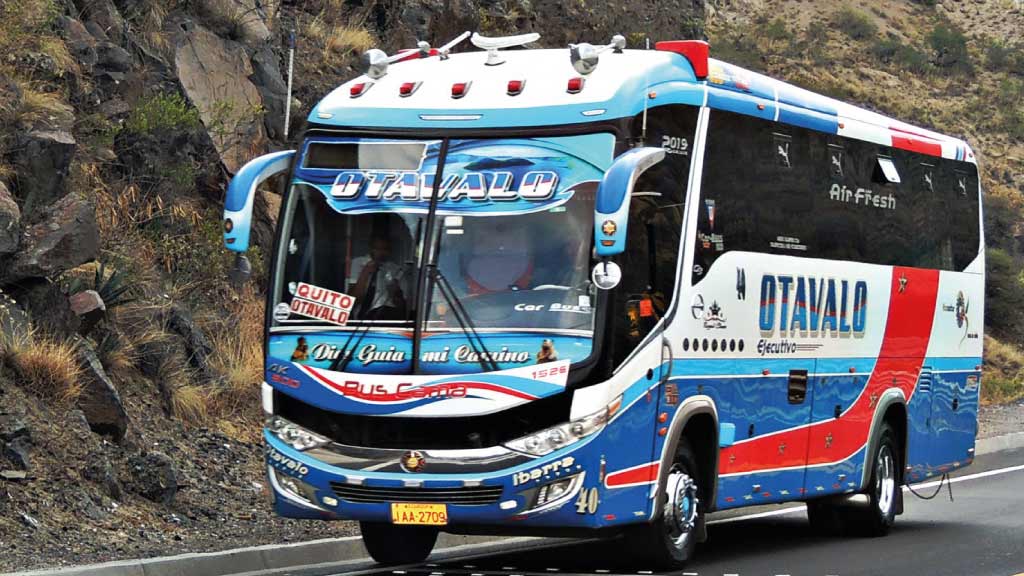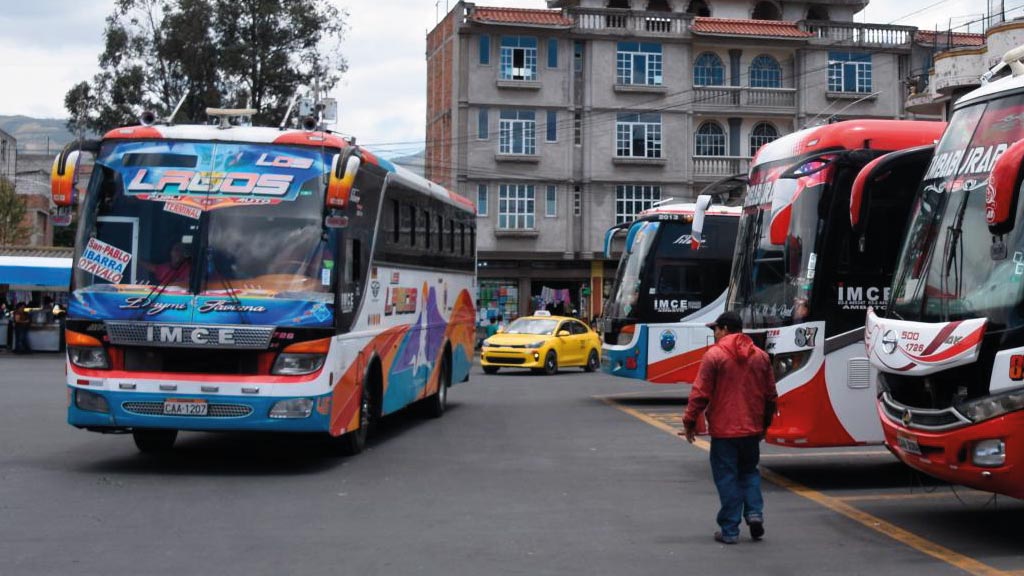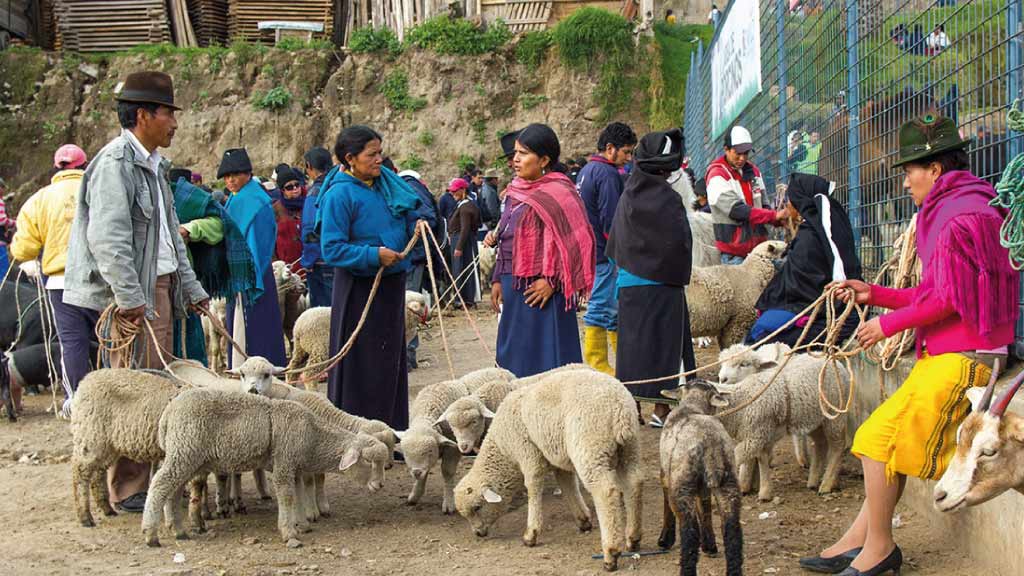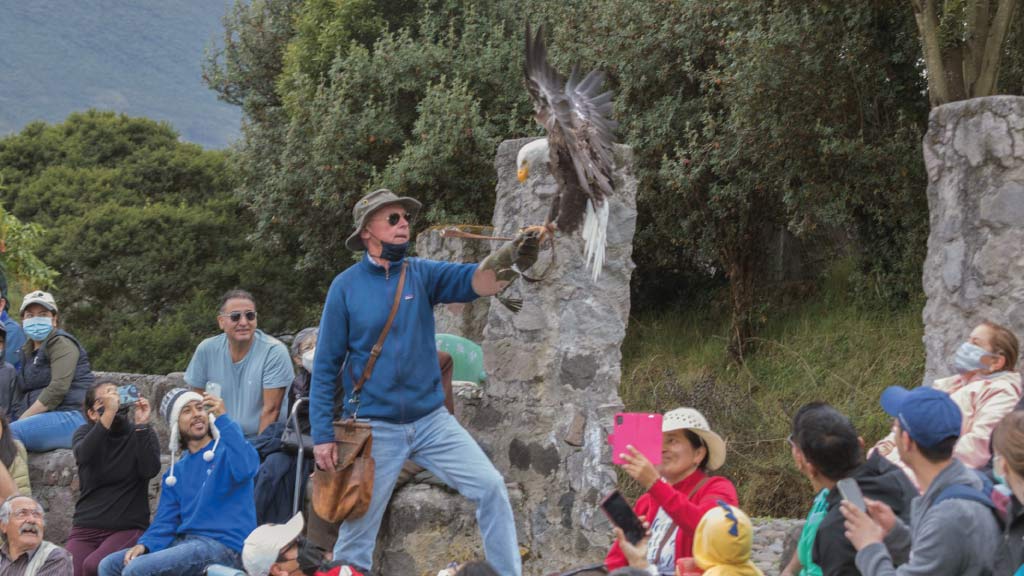Otavalo Ecuador
Otavalo is famous the world over for its indigenous market. Colorful stalls offer an array of handicrafts and textiles, making the Otavalo Market the perfect spot to pick up gifts and souvenirs.
What many visitors don’t realize, however, is that Otavalo Ecuador has much more to offer besides. In fact, Otavalo ticks all of the right boxes for pristine nature, and cultural experiences too. From family homestays to climbing sacred volcanoes, this is one region of Ecuador deserving of your time.
Keep reading for everything you need to know to plan an unforgettable visit to Otavalo Ecuador.
SECURE YOUR ECUADOR TRAVEL
Get a FREE personalised quote today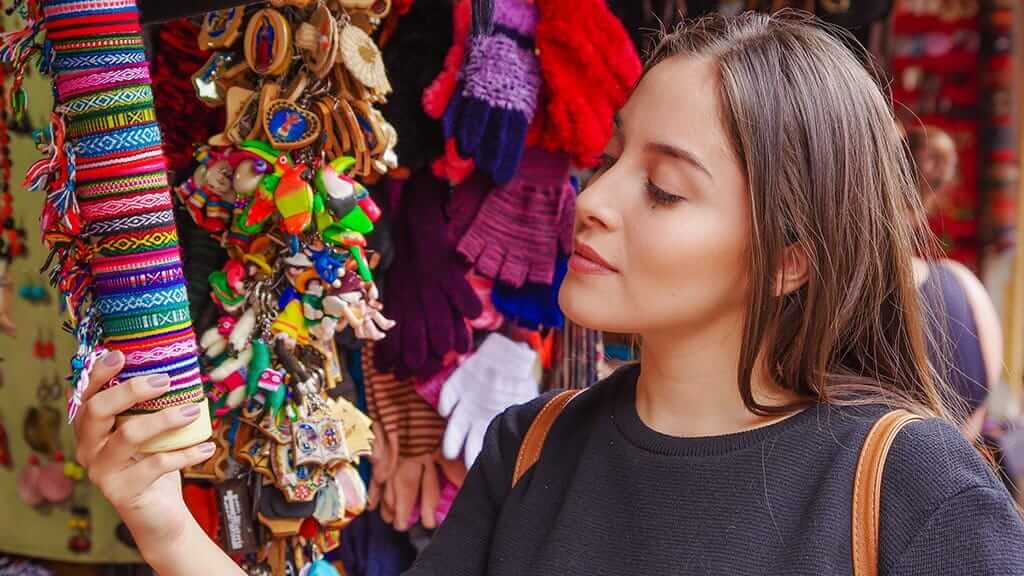
Everything You Need to Know About Otavalo Ecuador
Before we get into the nitty-gritty of how to visit Otavalo, let’s kick off with some fast facts.
Province: Imbabura.
Otavalo Elevation: 2,565 meters (8,415 feet) above sea level.
Otavalo Town Population: 41,718 (2022 census).
In Ecuador, Otavalo is most well-known for its colorful market, friendly indigenous people, and beautiful scenery including volcanoes, lakes, and valleys.
Where is Otavalo Ecuador?
Otavalo town is located in the northern part of Ecuador’s central Andes Sierra region, about 90 kilometers (56 miles) north of the capital city Quito.

Sitting at an elevation of a little over 2,500 meters above sea level, Otavalo enjoys a cool and pleasant climate all year round.
How To Visit Otavalo Ecuador?
The good news is that Otavalo Ecuador is easy to visit with just a little planning.
Otavalo is rarely too crowded with tourists, even on Saturday market day. It can be visited as part of a tour or under your own steam and has heaps of activities to keep visitors entertained both in and around town.
So, let’s see the different ways that you can plan your Otavalo trip.
1. Quito to Otavalo Bus
The Good news for backpackers is that it’s very easy to get from Quito to Otavalo by yourself.
Traveling from Quito to Otavalo by bus is a popular, convenient, and cheap option. The journey offers a chance to enjoy the scenic landscapes of Ecuador’s highlands.
Several companies operate bus services between Quito and Otavalo. In no particular order, these companies include Cooperativa Otavalo, Transportes Imbabura, and Andina de Transportes.
Buses to Otavalo depart from both of Quito’s bus terminals (Carcelén Terminal and Quitumbe Terminal). Due to its location north of Quito, Carcelén is the most commonly used terminal for Otavalo.
The Quito to Otavalo bus usually takes about 2 hours, depending on traffic and road conditions. Arrivals pull into Otavalo Bus Terminal, which is located conveniently near the town center.
With the exception of public holiday weekends, there’s no need to buy Otavalo bus tickets in advance. Travelers can just rock up at the terminal and buy a ticket on the next available departure. Given the multiple scheduled bus departures each hour, no forward planning is really required.
Ticket prices typically range from $2.50 to $4.00 USD per person. Tickets can be bought at the bus company booths in the terminal.
While this direct bus is convenient, tourists sometimes complain about pick-pockets onboard. So, keep your valuables close to hand at all times and be vigilant. Never use the overhead luggage area – that goes without saying on any Ecuador bus. Thieves have been known to slash bags from under seats, so we recommend keeping your backpack on your lap where you can keep an eye on it at all times.
2. Otavalo Tours
If the bus sounds like a hassle you’d rather avoid then why not try a guided Otavalo day tour from Quito instead?
This is a stress-free option and can be a great way to make the most of your time. A private guide takes care of travel logistics, with pickup and drop off from your Quito Hotel.
The itinerary of an Otavalo day tour is also flexible, so you can pick and mix the activities you’d like to fit into the day. This can easily include some of the cool sites in and around Otavalo itself.
Happy Gringo also offers a popular 3-day Otavalo Highlights Tour with a driver, a comfortable overnight stay, and the perfect blend of fun activities to discover the best of Otavalo and the surrounding area.
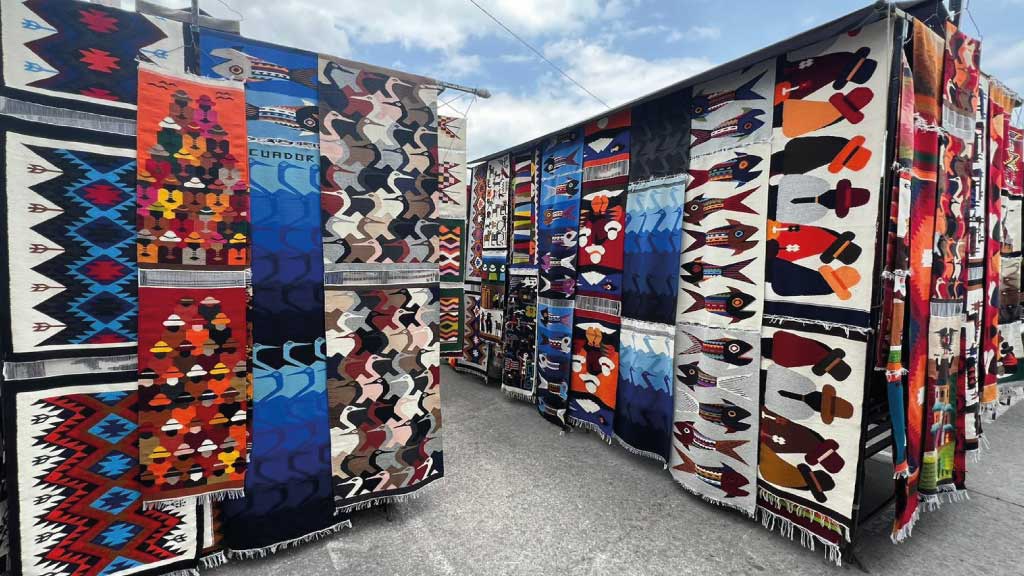
Otavalo Activities - Best Things to Do at Otavalo Ecuador
There are easily enough Otavalo activities to fill up 3 or 4 fun-packed days.
As well as cultural experiences, there are many areas of natural beauty close by around Otavalo.
Here’s a list of my favorite Otavalo activities, in no particular order.
1. The Famous Otavalo Market
Let’s start with what Otavalo is best known for its market.
Every Saturday, the Plaza de los Ponchos turns into one of the largest indigenous markets in South America. Colorful market stalls sell local textiles, intricate jewelry, handcrafted leather goods, and vibrant artwork.
Even if you don’t catch Otavalo Market on a Saturday, the main stalls on Plaza de Ponchos also open throughout the week, albeit on a smaller scale.
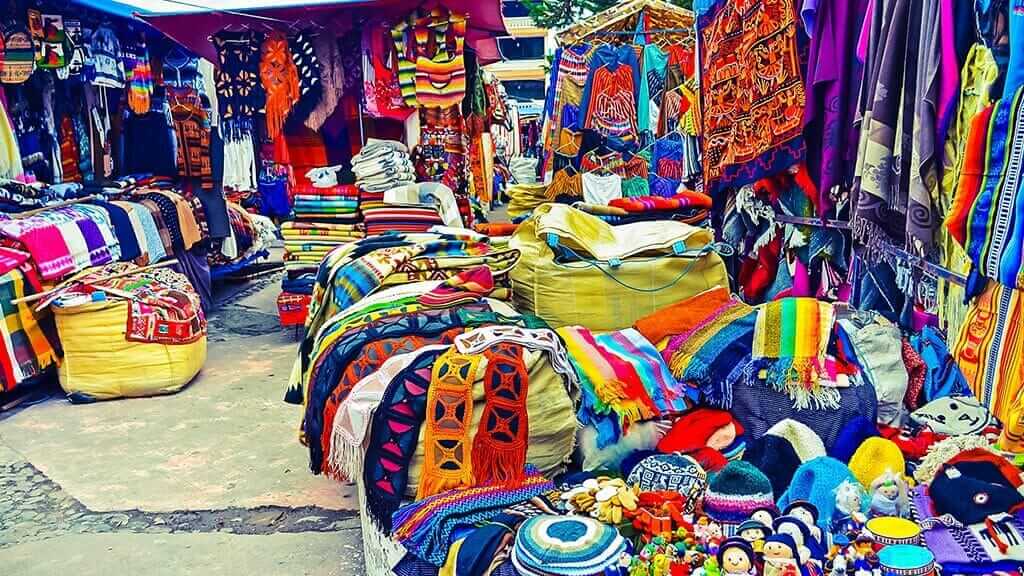
Otavalo Market mostly sells local handicrafts at attractive prices. It is very much a tourist market these days but is perfect for souvenir and gift shopping. Over the years I’ve bought a variety of hammocks, ponchos, alpaca sweaters, gloves & scarves, precious stones, painted masks, casual trousers, and much more.
Don’t be afraid to haggle before you buy—it’s a fun part of the experience! It’s not uncommon to be able to knock 20-40% off of the original price without too much work.
After a few hours of shopping, I recommend making a stop at the Shenandoah Fruit Pie Shop. The mortiño pie with ice cream is unmissable and will re-energize you, ready for round 2 of shopping!
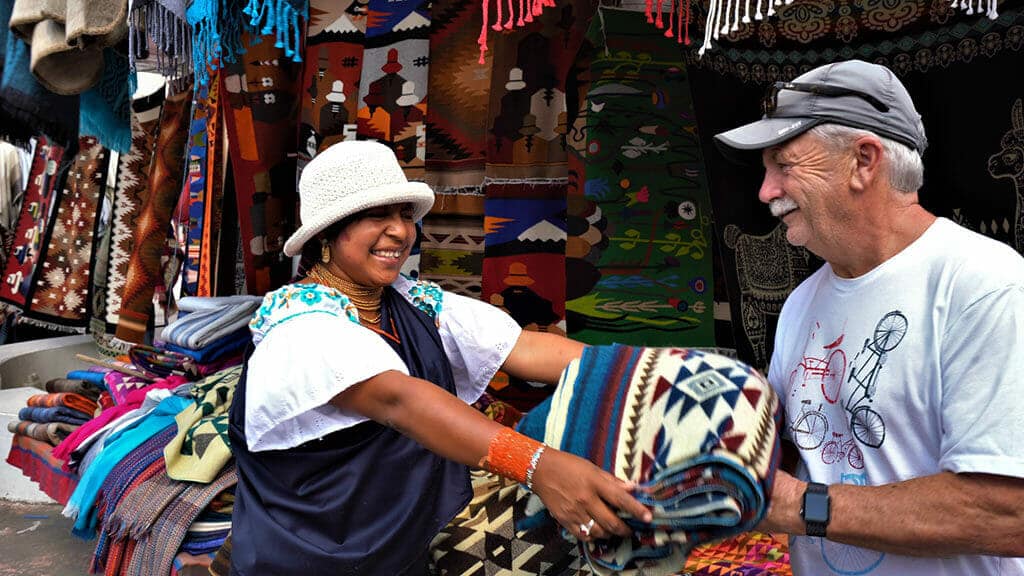
2. Otavalo Animal Market
Besides the famous Otavalo Handicrafts Market, there is also a less well-known local animal market.
Early on Saturday mornings, local indigenous people gather in their ponchos outside of town to haggle over livestock large and small. This is where horses, cows, chickens, pigs, donkeys, ducks, and guinea pigs change hands for a haggled fee.
It’s quite a scene to behold and a great way to experience authentic market behavior in Ecuador.
For those interested, aim to get there by 06:30 or 07:00 am when the market is in full swing, and the bargains are flowing.
3. Otavalo People Watching
Here’s an easy activity that can be done anywhere in or around Otavalo town.
Otavaleños are very photogenic. The combination of traditional hats, long braided hair, colorful layered dresses, and elated expressions is interesting to watch.
In terms of traditional Otavalo dress, the women typically wear distinctive white embroidered blouses, with flared lace sleeves, and black or dark over skirts, with cream or white underskirts. Long hair is tied back with a band of woven multi-colored material. They usually have many strings of gold beads around their necks, with the number of strands and thickness of beads representing their age and wisdom, and matching tightly wound long strings of coral beads around each wrist. Men, in comparison, wear white trousers, and dark blue ponchos.
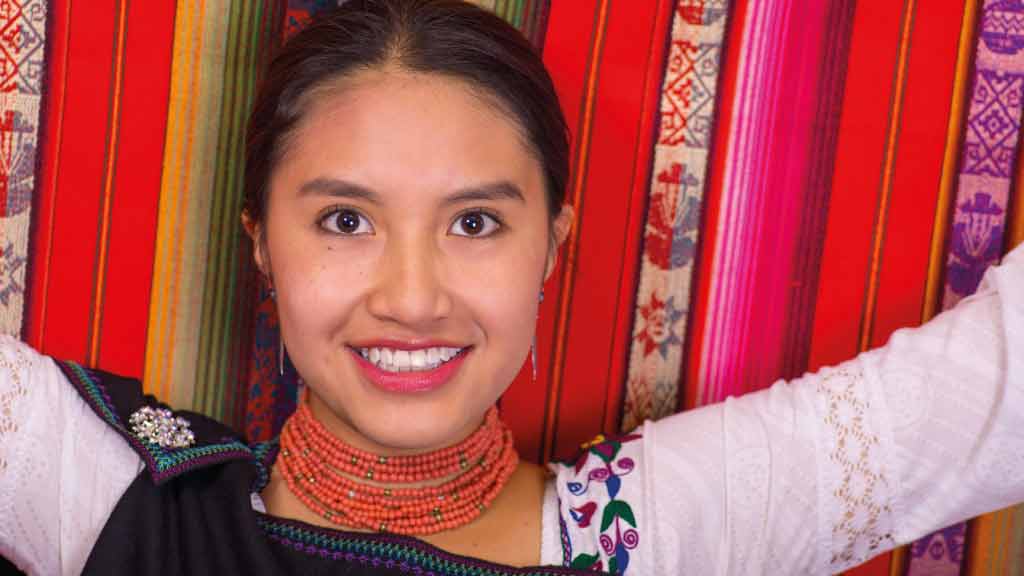
The locals are very friendly and welcoming, so take the opportunity to mix a little and make some new friends.
For avid photographers, Otavalo is a dream destination for portrait photos. Just remember to be respectful, and ask for permission when necessary. People from Otavalo are very proud of their traditions, so will often be happy to collaborate for a photo or two.
For a deeper dive into local culture, visit the Museo Otavalango. It’s a small museum, but it does an excellent job of showcasing the history and traditions of the Otavalo people. You’ll leave with a greater appreciation of the town and its inhabitants.
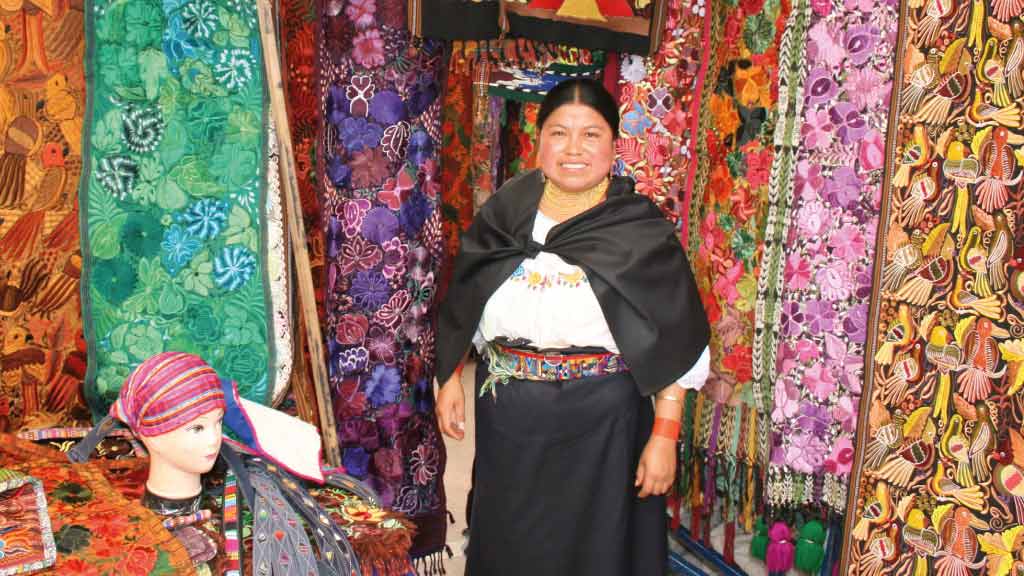
4. Otavalo Weavers
Another recommended Otavalo activity is to visit a local weaving workshop. This is much less touristy than the stalls at Otavalo Market.
Weaving in Otavalo dates back to pre-Columbian times. The Otavalo people were known for producing high-quality textiles even before the arrival of the Spanish, using backstrap looms and natural dyes made from plants, insects, and minerals. Over time, their techniques evolved, incorporating European methods and materials, but the essence of their traditional art remains strong.
The textiles produced by Otavalo weavers are known for their vibrant colors, intricate designs, and fine quality. You’ll find everything from ponchos and blankets to scarves and tapestries, each item reflecting the unique patterns and symbols of the Otavalo culture.
While the wares at Otavalo Market are mostly mass-produced in factories, the Otavalo Weaving Workshops still produce quality goods by hand. For this reason, I’d suggest paying the asking price, or at least reducing your haggling to a minimum.
Happy Gringo includes a visit to one of several weaving workshops during our day tour from Quito.
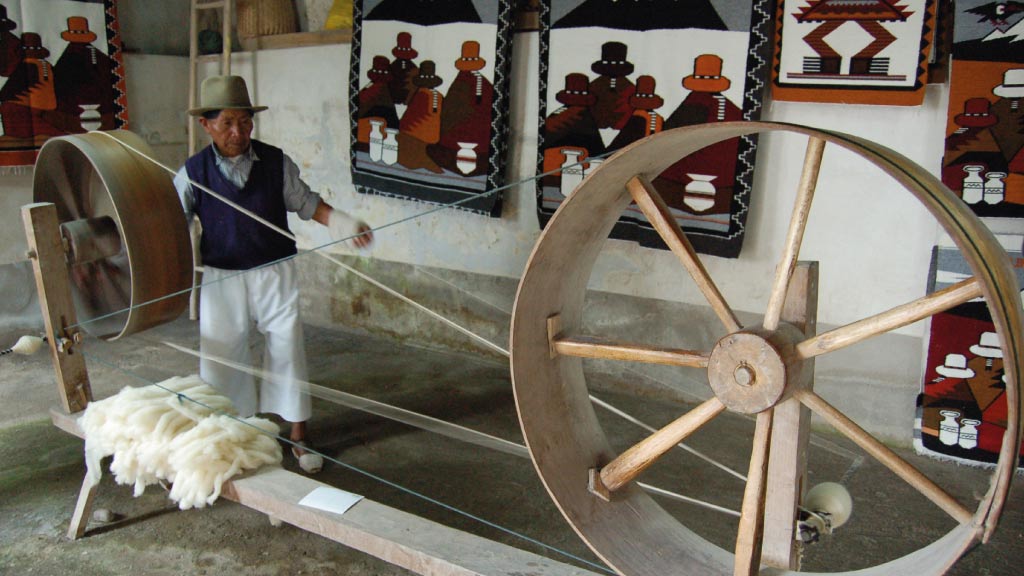
5. Otavalo Musical Instrument Makers
Otavalo is also famous for its rich musical traditions, which are closely tied to the indigenous culture of the region.
The town and surrounding areas are home to many talented musicians and artisans who create traditional Andean instruments. These instruments are often featured in the vibrant and soulful music of the Otavalo people, which plays an important role in their cultural celebrations and daily life.
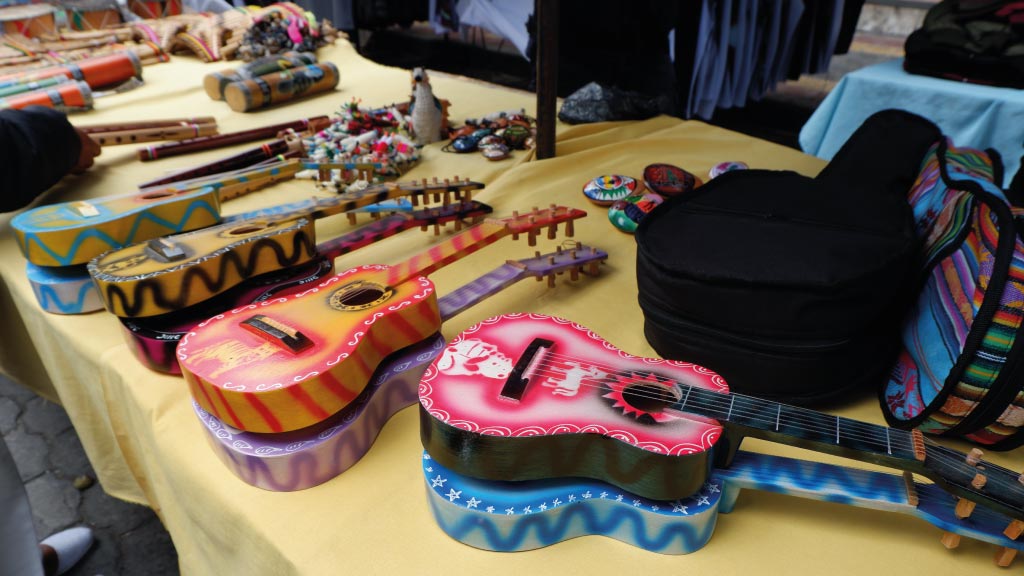
On the outskirts of Otavalo, it’s possible to visit a musical instrument workshop to learn more about Panpipes, Charango (a small stringed instrument similar to a guitar), Quena (a traditional Andean flute made from bamboo or wood), Bombo (a large drum made from wood and animal skin), Chajchas (a small percussion instrument made from dried goat hooves, strung together to create a rattling sound), and Maracas.
Visiting local workshops is a great way to see how these instruments are made. Artisans often welcome visitors, and you might even have the chance to watch them craft an instrument or try playing one yourself.
There are also specialist musical stalls at Otavalo market selling instruments and CDs of local music.

6. Otavalo Traditional Homestay
The best way to immerse yourself into the traditional Otavalo way of life is to homestay with an indigenous family.
Communities like San Clemente are well known for accepting tourists into family homes for an authentic experience.
You’ll get to prepare and share traditional meals with a local family and discover a typical day in their lives, from herding llamas to embroidery, music, and dance.
If your visit happens to coincide with a local festival then all the better. Inti Raymi (summer solstice), in particular, is a rich celebration with cleansing, music, and dance going into the wee hours.
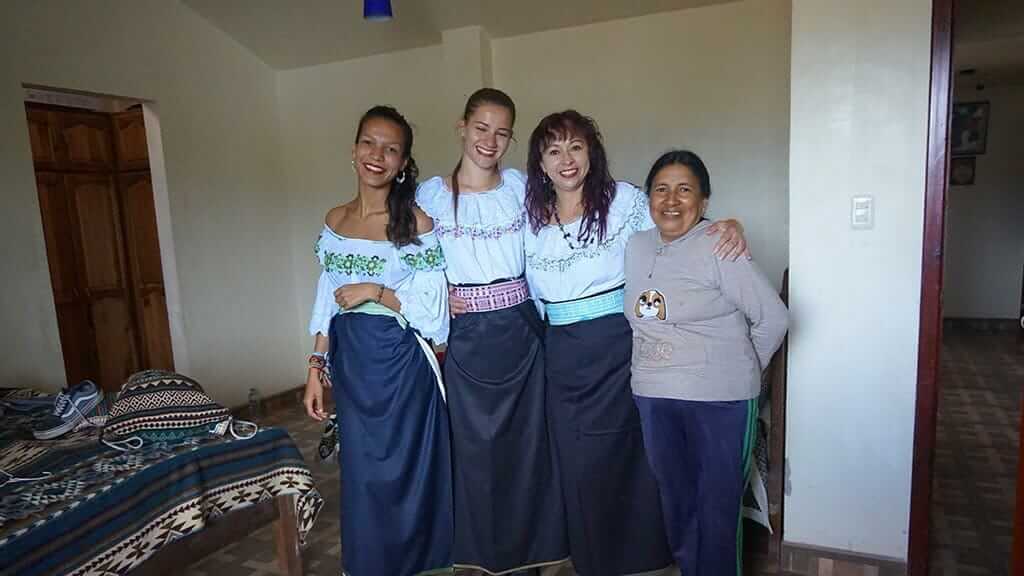
7. Peguche Waterfall (Cascada de Peguche)
Peguche Waterfall is one of the most beautiful natural attractions near Otavalo, Ecuador.
Located just a few kilometers north of the town, this stunning waterfall is not only a scenic spot but also holds deep cultural and spiritual significance for the indigenous Kichwa people.
Take a taxi or bus to Peguche from Otavalo town. From there a well-maintained trail leads to the waterfall, making it an accessible destination for tourists of all ages. The walk to the waterfall takes about 15-20 minutes from the entrance.
The waterfall is about 18 meters (60 feet) high and is fed by the nearby Laguna de San Pablo, which flows into the Jatun Yacu River. It’s a scenic spot for a picnic or to take photos of the cascade.
For the indigenous Kichwa people, Peguche Waterfall is more than just a beautiful natural site—it is a sacred place for bathing and cleansing on important festival dates.

8. Condor Park (Parque Condor)
For something a little different, head up to Otavalo Condor Park for stunning views, and a deep dive into wildlife conservation. This park is dedicated to the preservation of birds of prey, with a special focus on Andean condors.
The real stars of the park are the birds. Condor Park is home to a variety of raptors, including hawks, eagles, falcons, owls, and, of course, condors. The park rescues and rehabilitates birds of prey that have been injured or kept in captivity, with the goal of releasing them back into the wild when possible.
If you do head up to Parque Condor, be sure to catch a flying demonstration, held daily at 11:30 AM and 3:30 PM. A local guide is on hand to explain more about their birds, and you can watch a resident eagle soaring high over Otavalo before returning.
At the time of writing, Otavalo Condor Park is open Wednesday to Sunday from 09:30 to 17:00, charging a $4,50 entry fee.
GET FREE ADVICE
From an Ecuador destination expert today9. Cotacachi Town & Cuicocha Lake (Laguna de Cuicocha)
Cotacachi and Cuicocha offer a 2-for-1 activity from Otavalo.
Cotacachi Town is famous for its high-quality leather goods for sale in shops along the main street. It’s also a popular haunt for retired expats from North America and further afield.
From Cotacachi, it’s easy to visit Cuicocha Crater Lake, one of the most stunning natural attractions in Ecuador.
Located about 12 kilometers (7.5 miles) from Cotacachi (25km from Otavalo), Cuicocha is part of the Cotacachi-Cayapas Ecological Reserve and offers breathtaking views and excellent hiking opportunities.
Cuicocha is a caldera lake formed by a volcanic eruption from over 3,000 years ago. The lake sits at an elevation of about 3,068 meters (10,065 feet) above sea level and is roughly 3 kilometers (1.9 miles) wide. The deep blue waters of the lake are surrounded by steep crater walls and lush vegetation, creating a dramatic and picturesque landscape.
One of the best ways to experience Cuicocha Lake is by hiking the Cuicocha Loop Trail. This well-maintained trail circles the entire lake and offers incredible views from different vantage points. The hike is about 14 kilometers (8.7 miles) long and can take around 4 to 5 hours to complete, depending on your pace and how often you stop to take in the views (which you’ll definitely want to do!). It’s also possible to take a shorter out-and-back trail.
Interestingly, the name "Cuicocha" translates to "Guinea Pig Lake" in the Kichwa language, named after the islands in the lake, which are said to resemble guinea pigs.
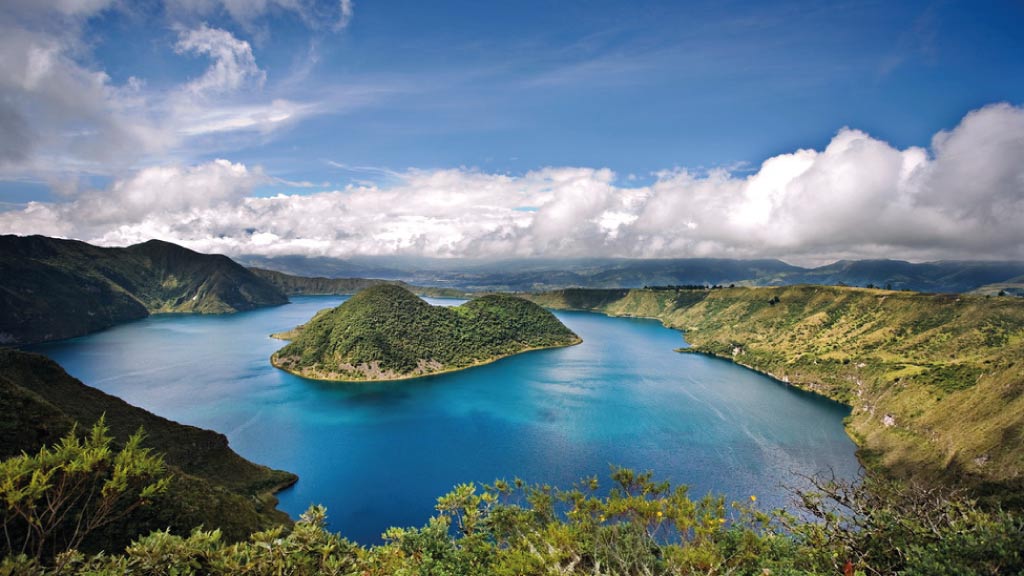
10. Mojanda Lake (Lagunas de Mojanda) & Fuya Fuya Volcano
Mojanda Lake is another spectacular natural destination in Imbabura Province.
Mojanda is composed of three interconnected crater lakes (Caricocha, Huarmicocha, and Yanacocha), surrounded by rugged mountains and breathtaking landscapes. The lakes are nestled at an elevation of around 3,700 meters (12,140 feet), so go prepared with warm clothing and lots of drinking water to stay hydrated.
Whilst there are trails around the lakes, for the best views trek up to the top of Fuya Fuya Volcano. The trail to the top is steep and can be challenging due to the altitude (4,263 meters, 13,986 feet), but the panoramic views of the lakes and the surrounding Andes make it a rewarding experience.
To get to Mojanda, it’s a 45-minute drive from Otavalo, along an unpaved and rough road. Taxis from Otavalo are usually happy to transport tourists out here, just be sure to organize the return journey too.
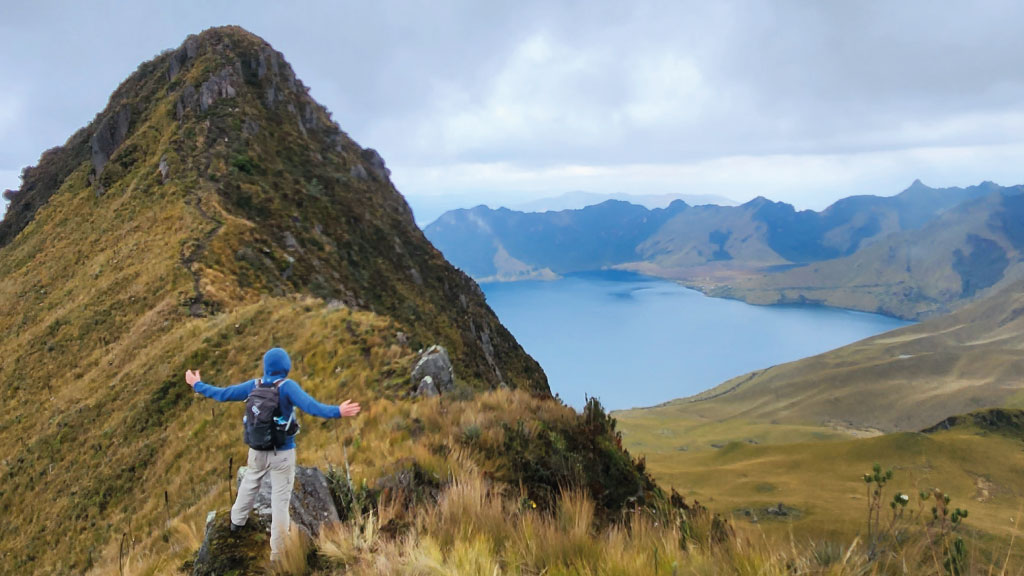
11. Imbabura Volcano (Taita Imbabura)
For a tougher day trek, Imbabura Volcano is a popular choice.
Make no mistake, Imbabura Volcano is a proper high-altitude hike, peaking at 4,630 meters (15,190 feet) above sea level. Above all, it’s a demanding trek due to the steepness of the climb, and scrambling that’s required towards the peak.
However, those who make it to the top are rewarded with breathtaking panoramic views of the surrounding Andean landscape. On a clear day, this includes Otavalo, Ibarra, and the sparkling waters of nearby lakes like San Pablo and Yahuarcocha.
The trail to Imbabura begins at the town of La Esperanza, located on the southern side of the volcano. We highly recommend going accompanied by a mountain guide. It's also important to go well-prepared with proper gear, including sturdy hiking boots, warm clothing, and plenty of water. The hike can take anywhere from 6 to 10 hours round-trip, depending on your pace and the weather conditions.
Imbabura is more than just a mountain, it also holds deep cultural and spiritual importance for the indigenous Kichwa people. The volcano is considered a sacred protector and is often referred to as Taita Imbabura, a symbol of masculinity and strength. In Kichwa mythology, Imbabura is the father of all the surrounding mountains and valleys and is believed to watch over and protect the local communities.

12. San Pablo Lake
Located at the base of Taita Imbabura, the spectacular San Pablo Lake is surrounded by several indigenous communities, including the town of San Pablo del Lago.
This is a lovely area to stay overnight outside of Otavalo. Comfortable cabins along the lake shore afford the best views, with traditional dining available in local restaurants.
The people living around the lake are known for their handicrafts, particularly weaving and textiles. You can visit local artisans' workshops to see how they create beautiful woven goods, and even purchase some handmade souvenirs.
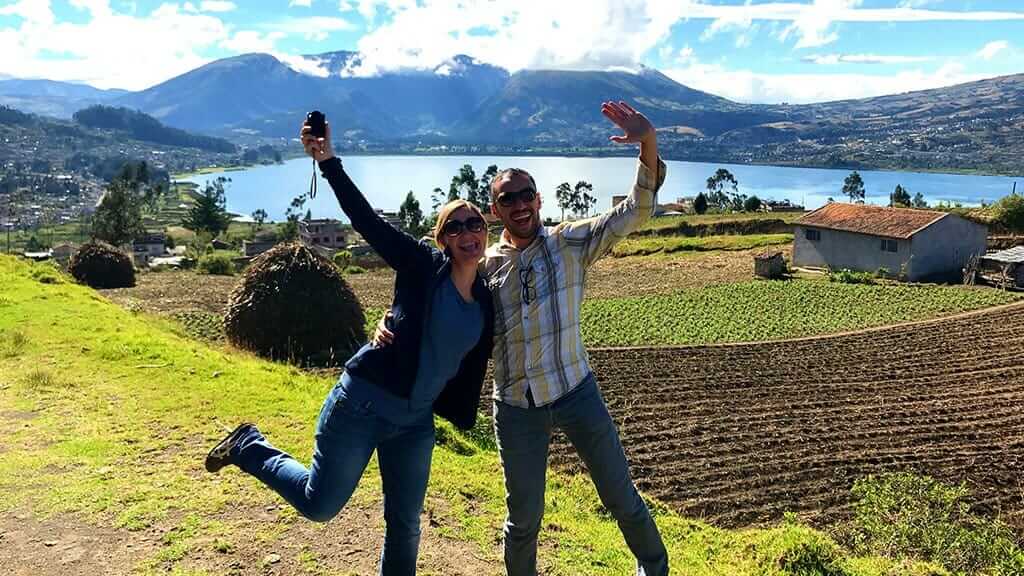
13. Try Traditional Otavalo Food
Of course, no visit to Otavalo is complete without sampling the local food.
Head to one of the many small eateries around town for a plate of hornado (slow-roasted pork), or locro de papas (a hearty potato soup with cheese and avocado).
Most dishes are also served with dry corn, chocho beans, or habas (broad beans).
Don’t forget to wash it down with a glass of fresh jugo (try naranjilla or tree tomato), or a local craft beer.
14. Visit Cayambe Town
Further afield, make a stop at Cayambe town located on the main route between Otavalo and Quito.
Cayambe is famous for biscochos, traditional oven-baked savory biscuits eaten with fresh, local cheese.
Cayambe is also a great spot to learn about Ecuadorian Roses. Why not visit an Ecuadorian Rose Farm to discover why our roses are so famous around the world for their high quality?

15. Stay Overnight at a Historic Hacienda
Far away from the hustle and bustle of Ecuador’s big cities, Haciendas are a step back in time. Colonial architecture, period antiques, well-maintained gardens, and fine dining reward visitors with a unique glimpse into Ecuador’s history.
Surrounded by the picturesque Imbabura countryside, haciendas around Otavalo offer a unique place to spend a night and a base from which to explore. Overnight stays are often not as expensive as one might imagine.
I can particularly recommend Hacienda Cusin, dating all the way back to 1602 when the Luna family bought the land from King Philip III of Spain. Hacienda Pinsaqui is another popular choice.
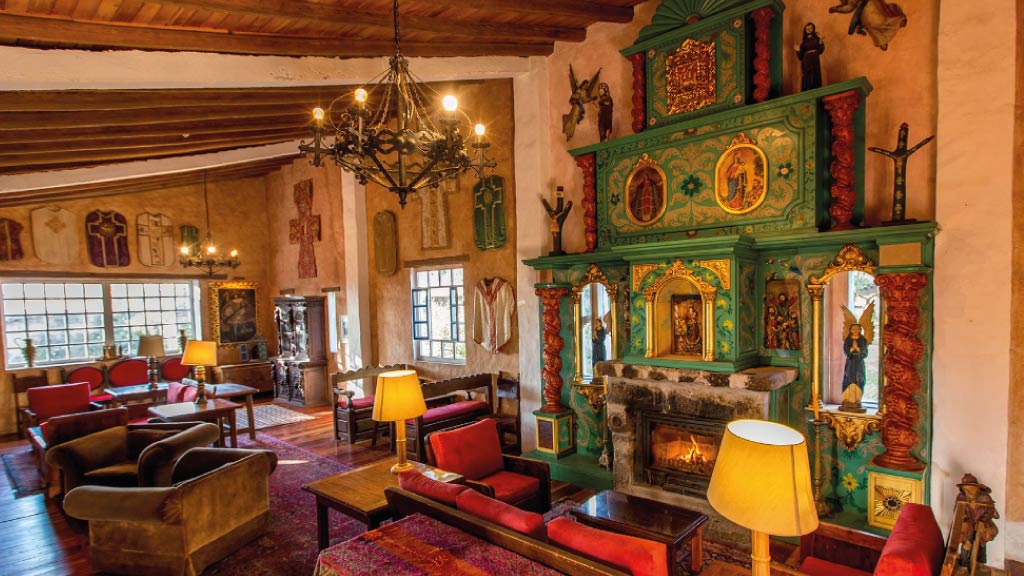
Practical Tips for Visiting Otavalo Ecuador
Otavalo Weather: The weather in Otavalo is very similar to that of Quito. It’s best to prepare for 4 seasons in one day, from strong sun to heavy showers. Daytime temperatures in Otavalo usually hover between 15°C to 22°C (59°F to 72°F), while nights can get cooler, dropping to around 8°C to 12°C (46°F to 54°F). There are 2 main climate seasons that hit Otavalo, the rainy season (October to May), and the dry season (June to August).
How many days in Otavalo? To visit Otavalo Market you’ll need just one day, however, you’ll be missing out on many of the other travel gems in this part of Imbabura. For those who like to explore the great outdoors, we recommend 3-4 days in and around the Otavalo area.
Best Time to Visit Otavalo: Saturdays are ideal if you want to experience the Otavalo Market in full swing. For a quieter visit, any day of the week also works fine when a smaller version of the market is open.
Staying Overnight in Otavalo: Consider staying a night or two to fully soak in the atmosphere at Otavalo. There are plenty of charming hotels and hostels in town, as well as historic haciendas and family homestays outside.
Is Otavalo Safe? Yes, Otavalo is considered one of Ecuador’s safest tourist destinations. That said, one should always remember to take basic precautions when traveling.
What to bring? Take some snacks and drinking water along with you on activities. Other recommended items include sunblock, a hat, sunglasses, raingear, warm fleece or jacket, comfortable walking shoes or sneakers, a camera, and cash to spend on souvenirs at the market. Good hiking shoes are recommended if you plan to visit the mountains or lakes around Otavalo.
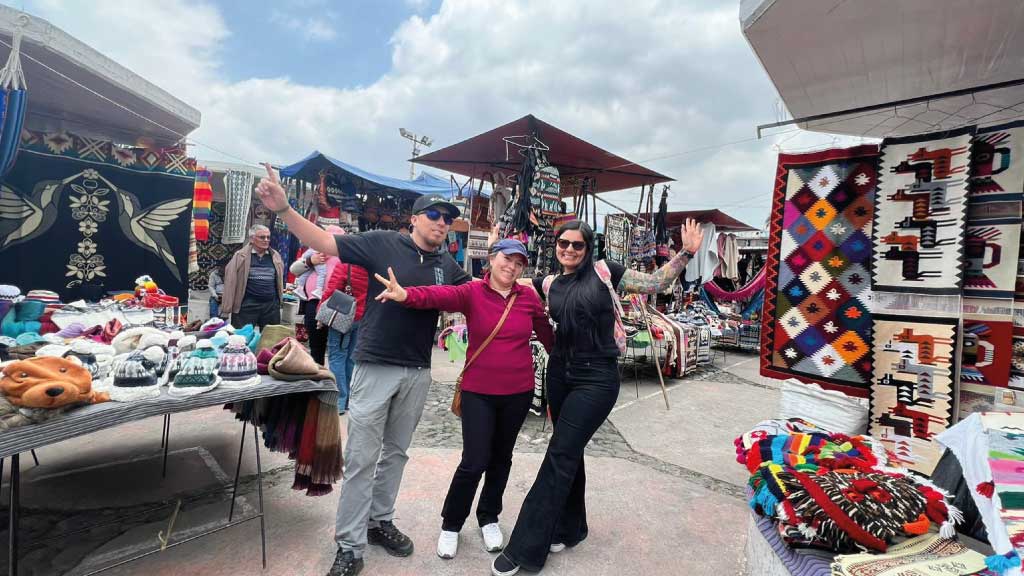
Contact us for a FREE TOUR QUOTE – Happy Gringo specialize in customized trips right across Ecuador, Galapagos, the Amazon, and Peru. We’ll be happy to include an unforgettable trip to Otavalo Ecuador in a vacation itinerary for you.
Book with the The #1 Trusted
Ecuador Travel Agency
In conclusion, Otavalo Ecuador should be on your to-do list to visit from Quito.
Otavalo offers a compelling mix of market souvenir shopping, traditional handicraft workshops to explore, plus spellbinding nature on the doorstep. What’s more, Otavalo is one of the best places in Ecuador to mingle with friendly local people, learn some of their traditions, and share unique experiences.
Located just a two-hour drive from Quito, Otavalo is the perfect day out or long weekend trip, so get your bags packed, let’s make it happen.

